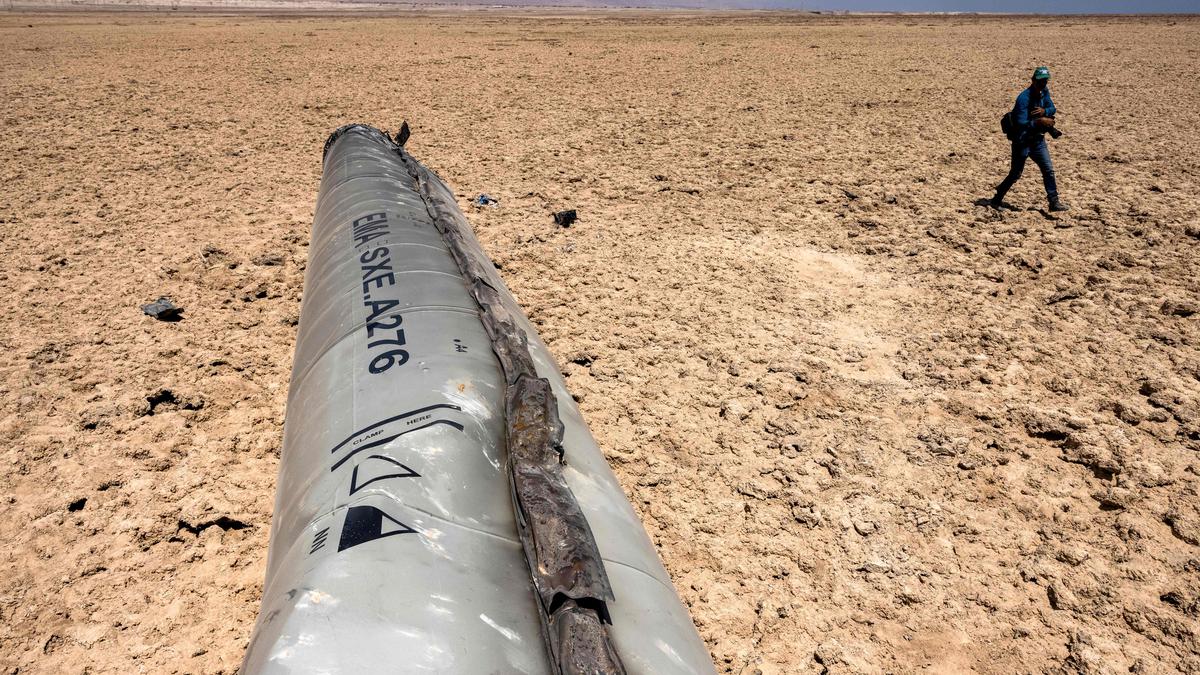
The conflict, from Nebuchadnezzar to Netanyahu Premium
The Hindu
Several historical, religious and geopolitical factors have sharpened Israel-Iran hostility
The ghost of Assyrian king Nebuchadnezzar (642-562 BC) would have probably gleefully approved of the recent first-ever direct projectile exchanges between Iran and Israel. After all, he sowed the seeds of this historic animosity in 586 BC by destroying the first Jewish temple, sacking the Jewish kingdom of Judea and taking its citizens in captivity to Babylonia. Jewish scripture Jeremiah described Nebuchadnezzar as the “Destroyer of Nations”.
While much water has flown down the Nile during the tumultuous regional history, the Jew-Persia enmity has survived 26 centuries; barring last century’s Pahlavi era in Iran when the two non-Arab, pro-American states had a tactical alliance. But the advent of the Islamic Republic in 1979 restored the historic “normalcy”, and the Mullahs in Tehran have been unswerving in denouncing Israel as “smaller Satan” and vowing its destruction. To this end, Iran has pursued weapons of mass destruction capacity, including drones, missiles and nuclear weapons. Leaders of Israel, the region’s only putative nuclear weapon state, consider Iran an “existential threat” and have vowed to never allow Iran to acquire nuclear weapons.
Till this month, the two confined their ill-concealed hostility to shadow boxing. Iran has backed non-state proxies such as Hezbollah, the Houthis and Hamas which have become a pernicious threat to Israel’s security while providing Tehran the fig leaf of deniability. Israel too has waged a determined campaign against them. It has also been engaged in undeclared air and missile operations against Iranian and Hezbollah presence in Syria and has tried to sabotage Iran’s nuclear programme. A precarious strategic dynamic had come into place – until an unacknowledged airstrike on April 1, suspected by Israel, on the Iranian embassy compound in Damascus, killing seven Iranians, including two generals. Iran retaliated on April 13 with over 300 drones and missiles on the Israeli targets, Israel claimed that 99% of the Iranian projectiles were shot down. In an unacknowledged tit-for-tat five days later, Israel hit the Isfahan airbase in central Iran with drones and a missile. This first direct confrontation between the two long-sworn enemies appeared designed by each to declare victory to their respective domestic audience. However, they have set a “new normal”, with dangerous portents.
Several historical, religious and geopolitical factors have sharpened Israel-Iran hostility. Four centuries of crusades widened this divide. Unlike Europe where Jews were often persecuted, small Jewish communities (“Mizrahi”) lived amicably among Arabs from Morocco to Iran, albeit with ghetto-based existence often confining them to trades such as money-lending and jewellery-making. The Zionist movement since 1897 urged the establishment of a Jewish homeland in Palestine and the Balfour Declaration provided it a quasi-formal commitment. As a larger number of occidental Jews (“Sephardim”) migrated to Palestine under a British mandate, terrorism by Jewish gangs such as Stern and Irgun sought to push out the local Arabs. The Nazi holocaust of Jews during World War Two accelerated the exodus of the Sephardim to Palestine.
In 1947, the United Nations adopted a resolution to partition Palestine. While the state of Israel was created, for various reasons, the intended Arab state of Palestine and the neutral city of Jerusalem could not be formed. In 1967, Israel defeated Arab armies and occupied Jerusalem, West Bank and Gaza which have largely been under its control since. Worldwide demand for a “two-state solution” has been gaining momentum. While Arab states have largely paid lip service to the “Palestine Cause”, Iran has been more vocal and strident. It created the anti-Israel “axis of resistance” comprising Hamas, Hezbollah and Houthis, sustaining them with weapons and money. It has created an elite Quds (Jerusalem) Force to support them. Much of its military preparedness and nuclear programme has been Israel-centric.
Although Islam initially regarded Jews as “People of the Book”, their perceived duplicity later cast them in a negative hue. An epic Muslim victory over a Jewish army at Khayber near Madinah in 628 AD, set a new hostile historic benchmark. Even today, the Arab anti-Israeli demonstrators can often be seen chanting in Arabic “Khaybar Khaybar yā Yahūd, jaish Muammad sauf ya‘ūd” (”Khaybar, Khaybar O Jews, Muhammad’s army shall return”). Last year, Iran unveiled “Khaybar” a 2,000-km range missile capable of hitting Israel. Most Iranians are Shia and Iran has sought to foster loyalties among Shias of Lebanon, Yemen, Bahrain, Iraq, Syria and even South Asia.
At a geo-political level, Iran also seeks to appeal to the global one billion-strong Muslim Ummah by playing up the emotive Palestine Cause. Tehran seeks to create a cleavage between Muslims in the street, who are pro-Palestine, and moderate Arab regimes seeking a non-disruptive political solution to the problem. The moderate Arab regimes resent Tehran’s one-upmanship and aggressiveness of its non-state proxies. Since 2020, the United States has tried to create an anti-Iran “Abraham Accord” alliance comprising some moderate Arab states and Israel. Some observers believe that the Hamas attack of October 7 was meant to disrupt the regional heavy-weight Saudi Arabia joining this alliance.





















 Run 3 Space | Play Space Running Game
Run 3 Space | Play Space Running Game Traffic Jam 3D | Online Racing Game
Traffic Jam 3D | Online Racing Game Duck Hunt | Play Old Classic Game
Duck Hunt | Play Old Classic Game











